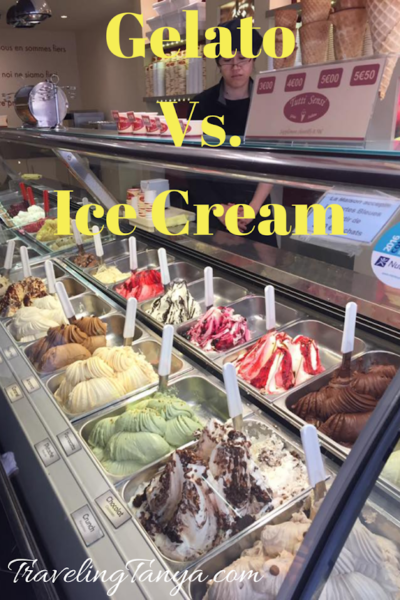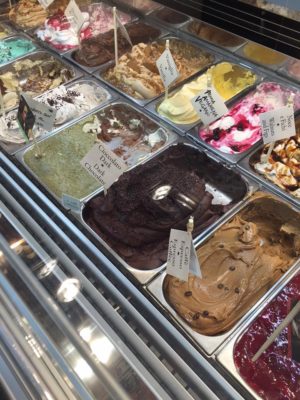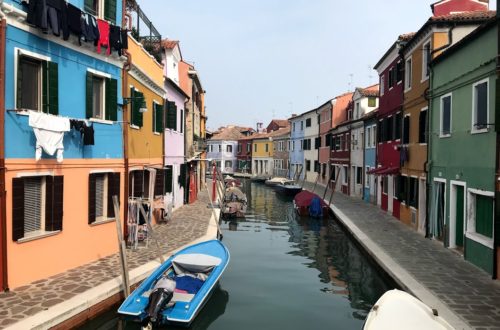
Gelato vs. Ice Cream
One of my favorite things about traveling is trying new foods and getting out of our dinner rut. But with a serious sweet tooth, desserts are my favorite foods to try!
In our house, we love ice cream! Especially while on vacation. There’s nothing like indulging in a sweet frozen treat when you are traveling…and calories don’t seem to count.

But when in Italy, it’s all about gelato!
As far as I’m concerned, a trip to Italy is not complete without partaking in this tasty dessert.

Italians take great pride in their gelato. So in preparation for our upcoming Italian adventure, I decided to learn a bit more about this infamous dessert.
I’m the kind of traveler that embraces the planning process. Studying up on gelato is the kind of trip planning that really gets me excited!
I truly hope a trip to Italy is in your future as well, so I invite you to join me in this delectable study session.
Knowing the basic tenants of authentic gelato will help ensure that you partake in this infamous dessert like a true Italian.
Similar But Different
Gelato and ice cream are not the same thing. This is such a critical distinction to make, I will say it again.
Gelato and ice cream are NOT the same thing.
If you are traveling to Italy and don’t want to seem like an uneducated tourist, do not use these two terms interchangeably.
While both are tasty, cool treats, how they are made, the ingredients, and how they are stored serve as key distinctions between gelato and ice cream.
Ingredients
Both ice cream and gelato include the basic ingredients of milk and cream. Yet ice cream is heavier on the cream and gelato generally includes a higher ratio of milk.
This distinction is a key factor in ice cream having a higher fat content than gelato. The Italians are definitely on to something here!
Another key difference is that ice cream generally includes egg yolks, but this ingredient is typically lacking in gelato.
Quality Italian gelato includes just a few ingredients of very high quality. You won’t find a long list of hard to pronounce ingredients, also known as preservatives, in authentic gelato.
For those who are counting calories, you may be happy to learn that gelato is a healthier alternative to ice cream. With fewer calories and less fat, go ahead and indulge in a daily scoop of gelato!
That is is exactly what I plan to do during our week in Italy.
Lactose intolerant? Never fear! Sorbetto is a dairy-free version of gelato found in most gelaterias. And it is equally delicious!
Production
Creating authentic gelato also involves a specific production process. Both desserts require churning to get the required consistency. Gelato must be churned at a slower pace as one of the key distinctions is less air whipped into the ingredients. This slow churning creates a denser final product than ice cream.
Ice cream and gelato are also stored at different temperatures to ensure proper consistency. Ice cream is the true frozen treat (around zero degrees). Whereas gelato is meant to be served a bit warmer (around 15 degrees) to ensure its characteristically smooth consistency.
Based on these 2 key factors, ice cream has a much longer shelf life. The best gelato is made fresh and eaten the same day.
Flavors
 Ice cream can be found in a seemingly endless variety of flavors. Traditional gelato, however, sticks to a more limited flavor assortment.
Ice cream can be found in a seemingly endless variety of flavors. Traditional gelato, however, sticks to a more limited flavor assortment.
Some of the most popular flavors found in just about every gelateria (gelato store) include vanilla, lemon, chocolate, hazelnut, stracciatella (vanilla with chocolate bits), pistachio, and coffee. A variety of berry-based gelatos and sorbettos are also common and should follow the flavors of the fruits currently in season.
Gelato actually has more intense flavor than ice cream. This is due to the lower fat content leading to less whipped air and it’s warmer temperature.
Without a numbed palate (which can lead to brain freeze!), your tongue can actually taste and recognize gelato’s flavors more so than those in ice cream.
Presentation
With the huge appeal of gelato among tourists, more and more gelaterias have popped up all across Italy and other parts of the world. But with mass production, some of the basic tenants of good gelato-making are often neglected.
While heaping piles of brightly colored gelato may lure in tourists, these are red flags when it comes to good gelato.
Florescent gelato likely means artificial coloring has been added. Quality gelato is often found in more subdued, muted colors. If the color of the gelato does not represent the color of the basic ingredients for that flavor, stay away.
Proper storage and presentation of gelato should ideally be in metal tins, possibly covered by a lid. If the gelato is piled in high mounds that is a sign it was not churned according to true gelato standards and is full of too much air.
This is also a tell-tale sign that the gelato is not made fresh every day. The best gelaterias make just enough gelato for that day’s sales or may even sell out before closing time. And they wouldn’t dream of selling the same gelato the next day.
Is your mouth watering yet?
If you want to learn even more about the fine art of Italian gelato, listen to this podcast episode with travel guru Rick Steves.
And stick around because I plan on showcasing my family’s daily gelato indulgence after our upcoming trip to Italy. After all this research, I’m ready for some taste testing in the birthplace of gelato…Italy!
I have a feeling our gelato eating spree will inspire you to put Italy at the top of your travel bucket list!
Ciao!
 Wherever the road takes you, make it a joyous journey,
Wherever the road takes you, make it a joyous journey,
Traveling Tanya
P. S. Want to join Traveling Tanya’s Tribe?! Subscribe to my email list (at the top of the screen) and never miss any of my exciting excursions and travel tips!
Pin It For Later!








One Comment
Pingback: